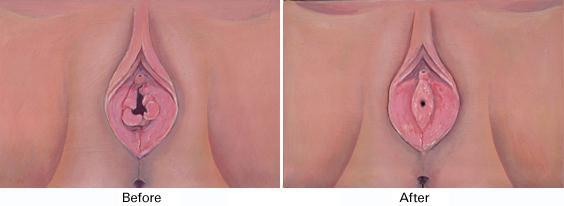Hymenotomy in Colombia
Search and Compare the Best Clinics and Doctors at the Lowest Prices for Hymenotomy in Colombia

Find the best clinics for Hymenotomy in Colombia
No clinics available
United Arab Emirates offers the best prices Worldwide
Price: $ 547

- Home
- Colombia
WHY US?
At Medijump, we're making medical easy. You can search, compare, discuss, and book your medical all in one place. We open the door to the best medical providers worldwide, saving you time and energy along the way, and it's all for FREE, no hidden fees, and no price markups guaranteed. So what are you waiting for?

Free

Best Price

Widest Selection

Risk-Free
What you need to know about Hymenotomy in Colombia

Hymenotomy is a surgical procedure to remove or open the hymen – the membrane near the opening of the vagina. It is usually performed on a woman with a septate or imperforate hymen that obstructs the flow of menstruation, as well as an unusually thick or rigid hymen, such as microperforated hymen, which limits access to the vaginal opening, causing pain and discomfort for sexual activities and removing/inserting tampons.
What does a Hymenotomy Procedure Involve?
You will receive general anesthetic before the procedure, but in some cases, a local anesthetic is used instead. Then, your surgeon will create an opening by cutting the membrane of the hymen using special surgical tools. The final step is securing any incisions using small dissolving stitches, which will be absorbed by your body naturally as you heal.
How Long Should I Stay in Colombia for a Hymenotomy Procedure?
You may be able to leave the hospital on the same day. However, you should plan to stay in Colombia for 5 to 7 days for initial recovery. Your doctor may also schedule a follow-up hospital checkup to monitor your healing.
What's the Recovery Time for Hymenotomy Procedures in Colombia?
Most patients feel well enough to return to work and resume their normal activities within a few days, but you may be recommended to rest for 1 week. You should be able to have sexual intercourse after 2 to 4 weeks following a Hymenotomy. It is important to consult with your surgeon as to when you can get back to your full routine, including work and exercises.
What sort of Aftercare is Required for Hymenotomy Procedures in Colombia?
It is very important to follow the post-operative care instructions that your surgeon gives you to help with your recovery, which usually includes recommended exercise, dietary restriction, and wound care. You also need to keep the genital area dry and clean and avoid inserting anything into your vagina, including a menstrual cup, tampon, or diaphragm at least until you have recovered completely.
What's the Success Rate of Hymenotomy Procedures in Colombia?
Hymenotomy is very safe, effective, and it has a high success rate. Although risks of side effects and complications are rare, they can occur, which include infection, bleeding, inflammation, scarring, injury to other organs, lingering pain, and scar tissue. Some people may also have complications when they become pregnant and give birth after the procedure, so make sure you consult with your surgeon if you are planning to become pregnant.
Are there Alternatives to Hymenotomy Procedures in Colombia?
Hymenotomy is currently the only option to treat imperforate, microperforated, and septate hymen. However, if you do not want to undergo surgery, you should discuss with your doctor what your best option will be.
What Should You Expect Before and After the Procedure
Before the surgery, you may be unable to have sex, menstruate, or use a tampon. After a hymenotomy, all of these problems are relieved and you can enjoy them without any pain. You will also be able to have normal menstruation.
Whilst the information presented here has been accurately sourced and verified by a medical professional for its accuracy, it is still advised to consult with your doctor before pursuing a medical treatment at one of the listed medical providers
No Time?
Tell us what you're looking for and we'll reachout to the top clinics all at once
Enquire Now

Popular Procedures in Colombia
Prices Start From $342

Prices Start From $222

Prices Start From $714

Prices Start From $69

Recommended Medical Centers in Colombia for procedures similar to Hymenotomy

- Interpreter services
- Translation service
- Religious facilities
- Medical records transfer
- Medical travel insurance
- Health insurance coordination
- TV in the room
- Safe in the room
- Phone in the room
- Private rooms for patients available

- Interpreter services
- Translation service
- Religious facilities
- Medical records transfer
- Medical travel insurance
- Health insurance coordination
- TV in the room
- Safe in the room
- Phone in the room
- Private rooms for patients available

- Interpreter services
- Translation service
- Religious facilities
- Medical records transfer
- Medical travel insurance
- Health insurance coordination
- TV in the room
- Safe in the room
- Phone in the room
- Private rooms for patients available

- Interpreter services
- Translation service
- Religious facilities
- Medical records transfer
- Medical travel insurance
- Health insurance coordination
- TV in the room
- Safe in the room
- Phone in the room
- Private rooms for patients available

- Interpreter services
- Translation service
- Religious facilities
- Medical records transfer
- Medical travel insurance
- Health insurance coordination
- TV in the room
- Safe in the room
- Phone in the room
- Private rooms for patients available

- Interpreter services
- Translation service
- Religious facilities
- Medical records transfer
- Medical travel insurance
- Health insurance coordination
- TV in the room
- Safe in the room
- Phone in the room
- Private rooms for patients available

- Interpreter services
- Translation service
- Religious facilities
- Medical records transfer
- Medical travel insurance
- Health insurance coordination
- TV in the room
- Safe in the room
- Phone in the room
- Private rooms for patients available

- Interpreter services
- Translation service
- Religious facilities
- Medical records transfer
- Medical travel insurance
- Health insurance coordination
- TV in the room
- Safe in the room
- Phone in the room
- Private rooms for patients available

- Interpreter services
- Translation service
- Religious facilities
- Medical records transfer
- Medical travel insurance
- Health insurance coordination
- TV in the room
- Safe in the room
- Phone in the room
- Private rooms for patients available

- Interpreter services
- Translation service
- Religious facilities
- Medical records transfer
- Medical travel insurance
- Health insurance coordination
- TV in the room
- Safe in the room
- Phone in the room
- Private rooms for patients available
Hymenotomy in and around Colombia
Colombia, officially the Republic of Colombia, is a country in northwestern South America. Since emerging from four decades of civil war, Colombia today has become a safe and rewarding place to visit. This country is blessed with breathtaking beauty, from Caribbean beaches and high Andean peaks to lush Amazon jungle and diverse wildlife, not to mention its gorgeous colonial cities, mysterious archeological sites, and magical culture. In recent years, the popularity of Colombia’s high-quality, internationally recognized medical centers has turned the country into an international medical tourism destination. The country is particularly popular for those who want to undergo top-quality, but affordable cosmetic surgery, such as liposuction and breast augmentation.
Popular Parts of Colombia
Bogotá, the capital of Colombia, is a city of contrasts. Colonial churches stand side by side with modern high-rise buildings, and the culture is a mixture of Spanish, English, and Indian influences. Here, visitors can see the Museo de Oro (Gold Museum), tour Casa de Nariño (the president’s house), visit the Botero Museum, or check out a beautiful view of the city from Monserrate Church. Besides Bogotá, Cartagena is also a popular destination. It is a wonderfully preserved colonial town next to the Caribbean. It is famous for many things, such as its Old Walled City, Castillo San Felipe de Barajas, Playa Blanca, Getsemani, and Plaza de Trinidad.
Weather and Climate in Colombia
Due to its proximity to the Equator, Colombia experiences a tropical climate. The average temperatures in the country remain the same all year round, ranging from 17°C to 24°C. There are generally two seasons in the country: the dry season and the wet (rainy) season. The dry season runs from December to January and July to August. The weather during this season is pleasant, with lots of sunny days. However, it can be dusty and windy. The rainy season spans from April to May and October to November. Rain usually comes in the afternoon or at night, while the morning is sunny.
Getting around in Colombia
El Dorado international airport is the main airport in Colombia. It connects Bogota with 42 domestic and 46 international destinations, serving 26 different countries across the globe, including France, Mexico, Canada, the US, the UAE, Japan, and the Netherlands. The fastest and most convenient way to get around is by plane, especially when traveling long distances. All major cities are connected by frequent bus services. Long-distance services usually use large, comfortable buses, while shorter distances are covered with vans, sometimes even sedans. To get around in most of the Pacific coast and the Amazon, boats are the only option, though they can be expensive. Inside cities, taxis are widely available and city buses are reliable. Several cities also have cable-car lines and metro train services.
Tourist Visas in Colombia
Nationals of 99 countries, including all EU countries, Australia, the US, the UK, and Canada, do not need a visa to visit and stay in Colombia for up to 90 days unless noted otherwise. Citizens of other countries are required to obtain a visa before their visit. The visa is valid for up to 90 days. Colombia has a special temporary visa for medical treatment, which may be granted to a foreigner who needs to undergo medical treatment in Colombia for more than 90 days.
Additional Information
- Local Currency: The currency of Colombia is the Colombian Peso (COP). 1 USD is equivalent to 3,838 COP. US dollars are sometimes accepted, but be aware that the prices may go up if you use US dollars.
- Money & Payments: ATMs are widely available throughout the main city. Credit cards, particularly Visa and MasterCard, are accepted. There is no tipping culture in Colombia, but many people tip around 10% of the bill.
- Local Language: Spanish is the most widely spoken language in Colombia. English is widely spoken in tourist areas.
- Local Culture and Religion: The biggest religion is Roman Catholicism. However, the constitution guarantees freedom of religion.
- Public holidays: New Year’s Day, Epiphany, Saint Joseph’s Day, Maundy Thursday, Corpus Christi, Sacred Heart, Colombia Independence Day, and Christmas Day are some of the most celebrated public holidays in Colombia.
Popular Searches
- Plastic Surgery in Thailand
- Dental Implants in Thailand
- Hair Transplant in Thailand
- Breast Augmentation Thailand
- Gastric Sleeve in Thailand
- Gender Reassignment Surgery in Thailand
- Laser Hair Removal in Bangkok
- Botox in Bangkok
- Dermatology in Bangkok
- Breast Augmentation in Bangkok
- Coolsculpting in Bangkok
- Veneers in Turkey
- Hair Transplant in Turkey
- Rhinoplasty in Turkey
- Stem Cell Therapy in Mexico
- Rhinoplasty in Mexico
- Liposuction in Mexico
- Coolsculpting in Tijuana
- Rhinoplasty in Korea
- Scar Removal in Korea
- Gastric Sleeve in Turkey
- Bone Marrow Transplant in India
- Invisalign in Malaysia
- Plastic Surgery in the Dominican Republic
- Tummy Tuck in the Dominican Republic
- Plastic and Cosmetic Surgery in Poland
- Rhinoplasty in Poland
- Hair Implant in Poland
- Dental Implants in Poland
- IVF in Turkey